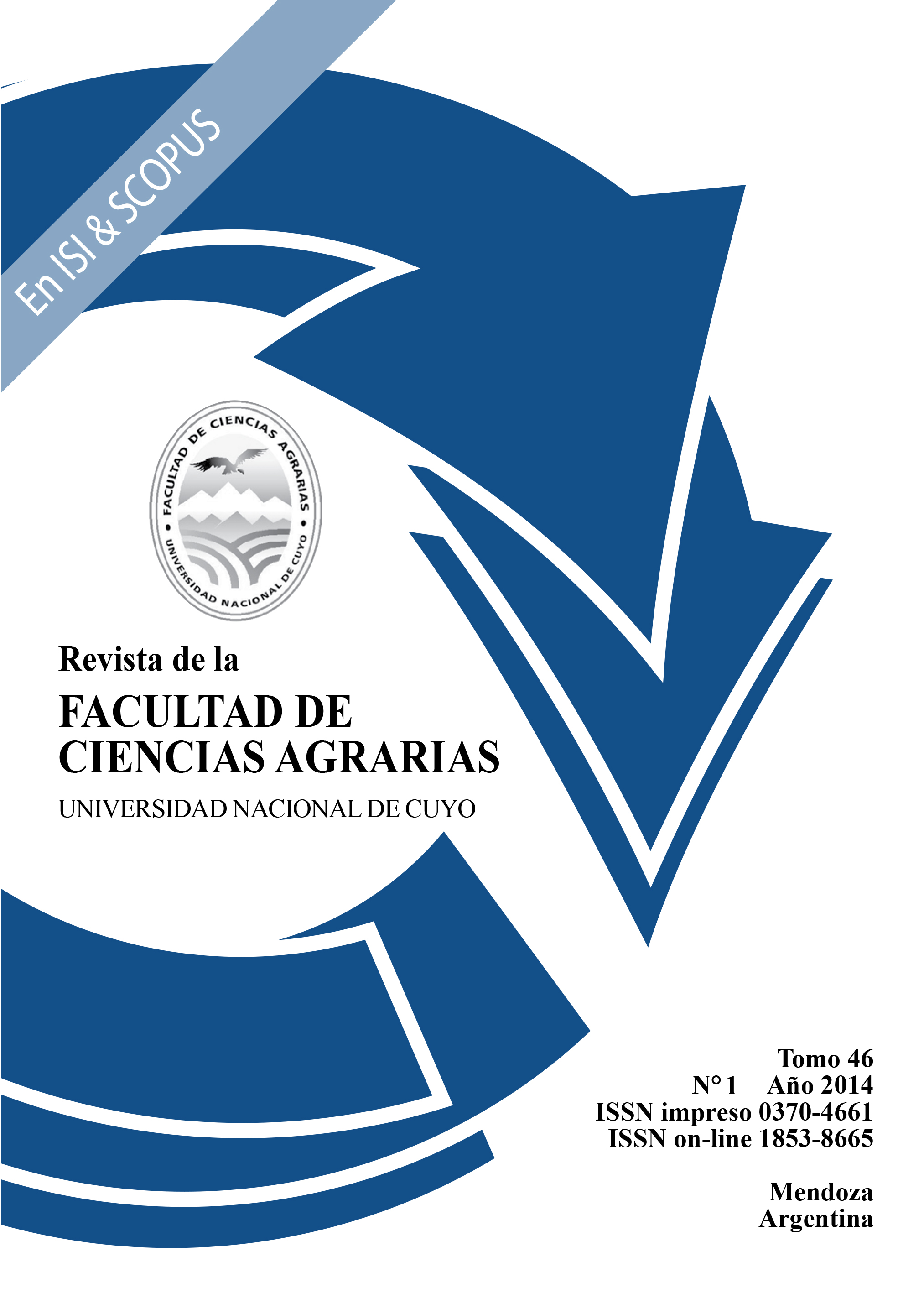Evaluation of initial growth of poplar clones in North Patagonia
Keywords:
poplar clones, initial growth, North PatagoniaAbstract
In the irrigated valleys of Río Negro and Neuquén poplar cultivation historically accompanied agricultural production using clones of Populus nigra L. in shelterbelts and Populus xcanadensis Moench. in forest plantations. With the aim to extend the availability of genotypes for different cultivation sites, a comparative trial with thirteen clones of poplar was installed at Pomona, Río Negro province. Six clones of euramerican hybrid poplar (P. xcanadensis 'Triplo', 'Ragonese 22 INTA', "Pangui INTA", "Pudú INTA" and commercial control 'Conti 12' and 'I-214'), six clones of eastern cottonwood poplar (P. deltoides 'Harvard', 'Onda', 'Stoneville 67', 'Carabelas INTA', "20-82" and "C-657") and one clone of P. xcanescens were evaluated. A completely randomized block design was used with fifteen replications and one plant per plot. After four growth periods, 'I-214' and 'Triplo' had the largest increases of diameter at breast height (DBH) while no significant differences in the values of 'Conti 12', 'Ragonese 22 INTA', "Pangui INTA", "Pudú INTA", "20-82" and P. xcanescens were found. The lowest increases were observed in deltoids 'Stoneville 67' and "C- 657". 'Ragonese 22 INTA', 'Triplo' and "20- 82" are alternatives for growing poplar in forest plantations and shelterbelt.
Downloads
Published
Issue
Section
License

This work is licensed under a Creative Commons Attribution-NonCommercial-ShareAlike 3.0 Unported License.
Aquellos autores/as que tengan publicaciones con esta revista, aceptan las Políticas Editoriales.




